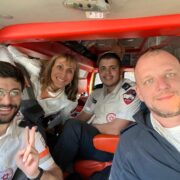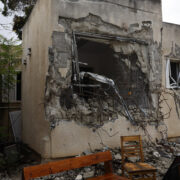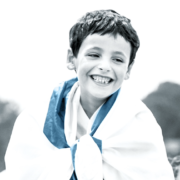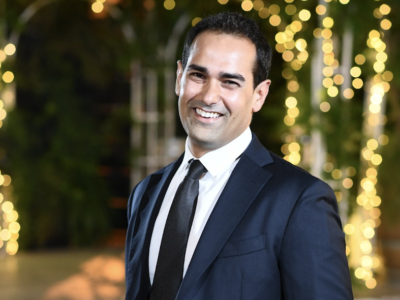 October is Breast Cancer Awareness Month—an important reminder for millions of women around the world who undoubtedly have been touched by the disease. Researchers in Israel don’t need a reminder as they are constantly working towards cures, better diagnostics, and treatments for breast cancer.
October is Breast Cancer Awareness Month—an important reminder for millions of women around the world who undoubtedly have been touched by the disease. Researchers in Israel don’t need a reminder as they are constantly working towards cures, better diagnostics, and treatments for breast cancer.
Researchers at Tel Aviv University (TAU) Faculty of Medicine, are among the leaders working on new diagnostic and therapeutic approaches to a disease that killed more than 43,000 women in the US in 2022, according to the American Cancer Society. In fact, eleven of the 72 researchers in TAU’s Cancer Biology Research Center (CBRC) focus exclusively on breast and ovarian cancers.
Surprisingly, it’s not breast cancer itself that led to many of these deaths, according to Professor Neta Erez, Vice Dean of TAU’s Faculty of Medicine. Her laboratory studies the role that tumor metastasis plays when the breast cancer spreads to other organs, such as the brain, lungs, and bones. Because there is no cure for metastatic disease, she and her team members work to understand the biology and mechanics of breast cancer cells, trying to prevent metastasis. To this end, her laboratory “grows” tumors by 3D printing them from the patient’s cells, to study the interaction between breast cancer cells and cells that surround it, seeking to understand, and hopefully interrupt, communication between cancer and normal cells, thereby blocking the development of metastasis.
Last year, Professor Erez reported on a new treatment can significantly increase the efficacy of chemotherapy and prevent metastasis, developing a treatment combination that reduced the incidence of lung metastasis following chemotherapy from 52% to only 6%.
Professor Erez has also discovered changes in healthy lung tissue which indicate their preparation to receive metastases. The changes were identified in the area known as “the micro-environment” of the tumor, and specifically in connective tissue known as fibroblasts. Researchers claim that these changes in the tissues are an early sign for the possible development metastases. Understanding the metastatic process and its diagnosis at such an early stage may lead to life-saving prophylactic treatment.
Professor Noam Shomron, Head of TAU’s Functional Genomics Laboratory looks at breast cancer from a genetic standpoint, focusing on microRNAs, tiny molecules found inside our cells that act like “gene controllers” by influencing which genes are active and which are not.
“In the context of breast cancer, our lab has discovered that certain microRNAs can help put a stop to the cancer from spreading to other parts of the body, which is a major concern with cancer,” Professor Shomron says, echoing Professor Erez’s research. “Our experiments were carried out on the most aggressive type of breast cancer, ‘triple negative cancer.’ Although our experiments used a mouse model, computational analysis predicts that this might also apply to breast cancer in women.
“MicroRNAs act as genetic traffic cops. They attach themselves to specific genes that are involved in cancer growth and spreading. Once attached, microRNAs act like red lights, blocking those genes from giving out their problematic instructions. By doing this, microRNAs can slow down or even halt the spread of cancer cells to other parts of the body. This is really important because when cancer spreads, it becomes much harder to treat.”
Professor Shomron has proven that microRNAs can stop the spread of breast cancer in mice once they are introduced to the vicinity of the primary tumor. The discovery opens new possibilities for breast cancer treatment, and he is now looking into advanced methods to use microRNAs to help keep cancer under control.
Breast cancer tumors themselves are still at the center of TAU cancer research, however. Professor Ronit Satchi-Fainaro, Director of the CBRC and the Head of the Cancer Research and Nanomedicine Laboratory at the School of Medicine, made waves with the world’s first fully functioning 3D-bioprinted model of deadly glioblastoma brain tumors. Now she plans to expand the approach to other malignancies, including breast cancer, as a tool to accelerate new therapy testing, expedite treatment decisions, and improve patient outcomes.
The TAU approach to breast cancer diagnosis also crosses disciplinary divides. Most recently, researchers led by Professor Rani Elkon of the Department of Human Molecular Genetics and Biochemistry and Professor Ron Shamir at TAU’s Blavatnik School of Computer Science have developed a computational model that makes it possible to predict an individual woman’s risk of developing breast cancer based on her genetic profile.
Once breast cancer is diagnosed, it must be treated therapeutically. Professor Adit Ben-Baruch, Incumbent of The David Furman Chair for Immunobiology of Cancer, and her laboratory hope to provide better and personalized therapeutic modalities in breast cancer. “Our approach is based on understanding the way the inflammatory/immune microenvironment affects pro-malignancy functions in breast tumor cells and its impact on tumor-stroma interactions,” she says.
Professor Ben-Baruch hopes that her work will promote personalized treatment for breast cancer victims. “The battle against breast cancer has been challenged by the fact that, generally, each component is studied meticulously, but singly,” she explains. “Too little attention is paid to the interactions between the tumor cells and their intimate microenvironment, consisting of various cells and soluble factors. Such cross-talks often promote breast cancer development and aggravate disease course; thus, identifying such interactions is crucial for the design of improved therapeutic modalities that are the most effective for the treatment of each individual patient, and thus are ‘custom-tailored.’”
The TAU approach to breast cancer research also crosses disciplinary divides. Most recently, TAU researchers led by Professor Rani Elkon of the Department of Human Molecular Genetics and Biochemistry and Professor Ron Shamir at TAU’s Blavatnik School of Computer Science have developed a computational model that makes it possible to predict an individual woman’s genetic risk of developing breast cancer based on her genetic profile.
It isn’t only in research laboratories where Tel Aviv University is making a difference in the diagnosis and treatment of breast cancer. In addition to groundbreaking research, TAU emphasizes patient-centered care and support for breast cancer victims and their families. It has developed comprehensive programs to provide them with the information and resources they need to navigate the complexities of breast cancer diagnosis and treatment, focusing on holistic well-being and improved patient outcomes.
Breast cancer research at Tel Aviv University is making remarkable progress, offering hope to countless individuals affected by this disease. The dedication of these women and men to personalized medicine, early detection, targeted therapies, immunotherapy, genetic research, and patient-centered care underscores their commitment to advancing breast cancer treatment and ultimately finding a cure. As TAU continues its journey towards eradicating breast cancer, the world watches with anticipation, knowing that each breakthrough brings us one step closer to a future without this devastating disease.










Comments